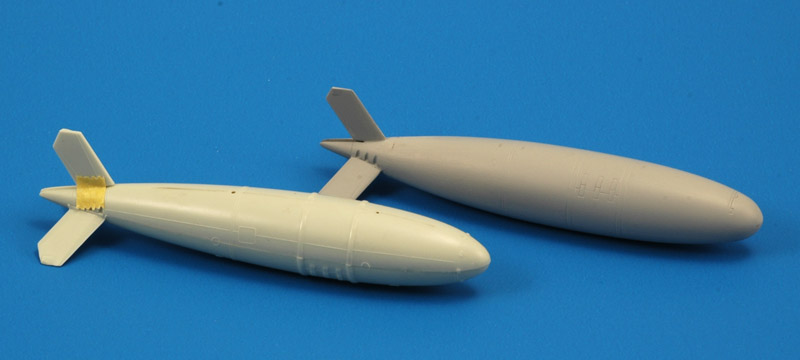
| I obtained the Mark 7 from the Monogram F-84F (left) and the Revell F-84G (right) kits, the latter shown with the extreme tail section cut off and rotated 180 degrees. They differ slightly in shape, but I selected the Revell parts mainly because they had engraved details. It's seen here with Mr Surfacer applied after assembly. | 
|
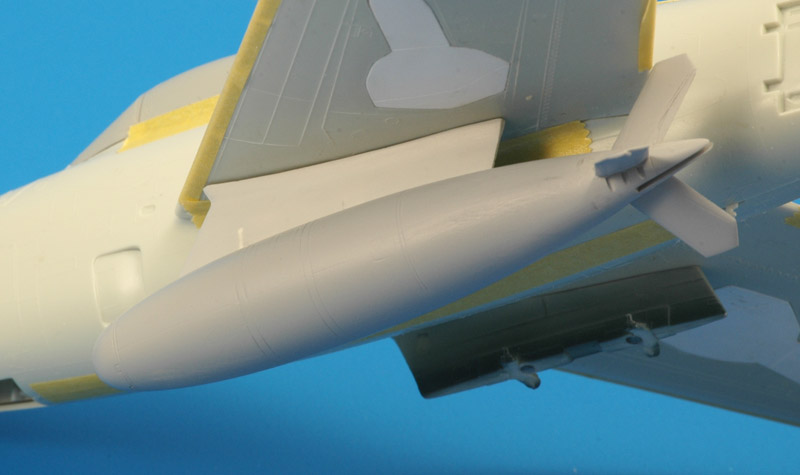
| The Monogram kit lacks the unique pylon for the Mark 7 nuke. I made line drawings on top of a few reasonable photos, averaged them, and came up with this shape. The rear end of the pylon can rarely be seen because the inboard wheel door is always in the way, but I finally found the shape on the cover of Warpaint #100, and finished the overall shape. |
| The Monogram instructions tell us to mount the Mark 7 as shown, with the vertical fin pointing up. This is also what I see in period photos with a dummy weapon, take for example Aerofox F-84F, pages 5 and 46. However on other aircraft types it is mounted inverted, and also museum Streaks show it inverted. Another point of doubt is the flap-fin interference, as shown here - it's very close. But the Aerofax photos also seem to show that. | 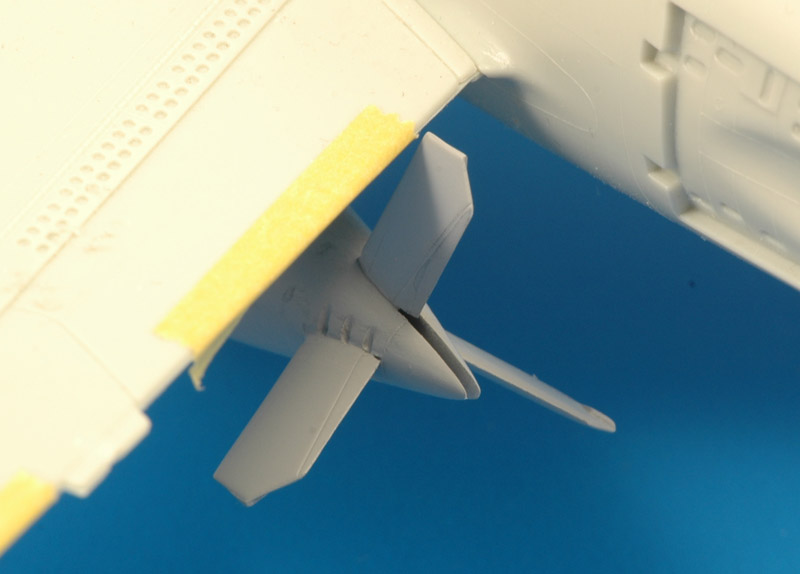
|
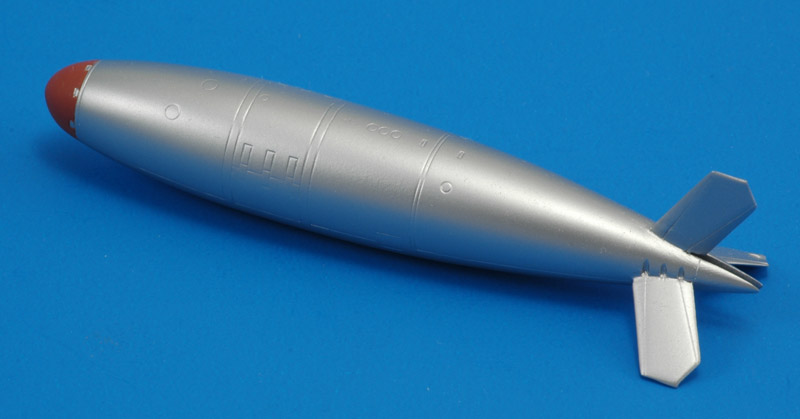
| Here's the bomb painted, using MRP-128 Silver overall and Humbrol 180 for the dielectic (glass fiber?) nose cap. Many museum photos show yellow bands, but I've read that these were not used in the fifties and sixties. For now I'm leaving them off. |
| I built the original Mark 7 pylon (top) on a drawing cobbled together from various low-res photos. Much later I found out that a preserved F-84F at Kleine Brogel air base was fitted with this unique pylon. The people of the KB Air Museum were so kind to provide measurements. I also found a much better hi-res photo of the pylon, and the combination of this data lead to a revision of the drawing. I wasn't far off with the first attempt, but the second version (below) is quite a bit better.
I used a casting of the first version to build the revised version. The pylon was made slightly taller (0.5 mm) and the bottom side was given a more accurate profile. The flange against the wing was widened considerably, but I'm still working on that. | 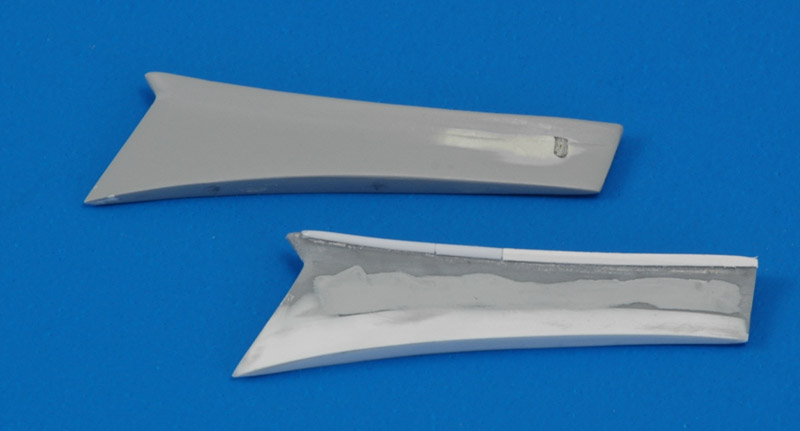
|
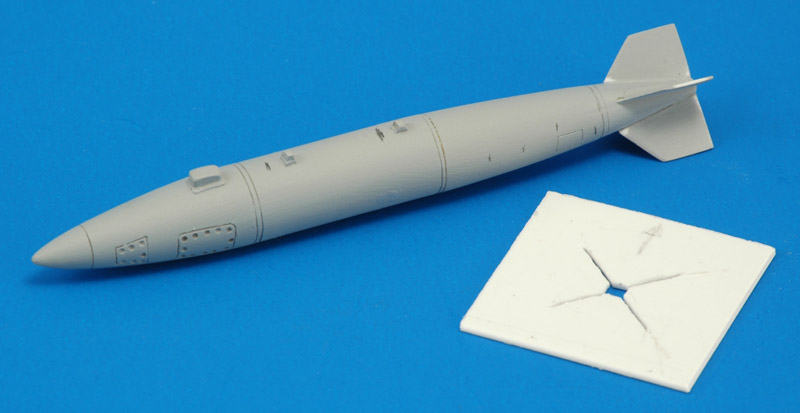
| Belcher Bits set BB13 provided the B28EX. I had some trouble building up the main body, because the three parts had slightly different diameters at their mating surfaces. The next challenge were the four tail planes, that are in an X-pattern on the F-84F. I cut the four fins from 0.4 mm plastic card according to the template that Belcher provides, and built a simple alignment tool to ensure the correct position of all fins. It worked really well, and I don't think you can do without something similar. Also, I thought the nose was a bit too blunt, so I built it up with some resin sanding dust and superglue. The weapon is painted Humbrol 127 here, to check the build quality. |
| Looking at the above weapon, it did not completely look like a B28 to me. I compared the rear section to drawings, and concluded it was too fat. I used a drill as a lathe, and turned the rear section down to the sizes measured from the drawing from Chuck Hansen's 'Swords of Armageddon', page V-440. After assembly and a coat of neutral gray it looked like this. Actually I don't see much of a difference, but I do like it a little better than the original shape. I still see differences with photos though. I had to remove the red cover on the nose section or it would not fit under the pylon. | 
|
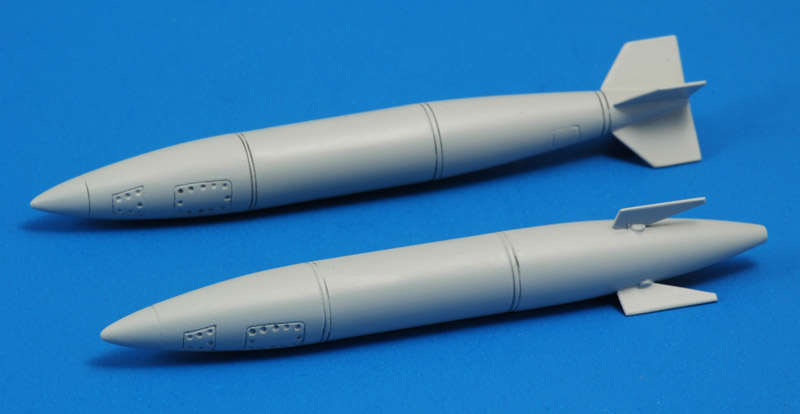
| The Belcher Bits set also contains the parachute-retarted B28RE. I thought (mistakenly) that just maybe this was used by the F-84F too, and therefore I needed one for my interviews. It was assembled similarly to the EX-version, and similarly fitted with three fins cut from 0.4 mm plastic card. I removed the pylon lugs, ground cart lugs and the remove-before-flight cover on the nose section, in order to create the weapon as suspended from the pylon. Only later I noted that some B28REs had four fins. |
| And here's the nuclear duo after painting. Similar to the Mark 7, I used MRP-128 Silver overall and Humbrol 180 for the dielectic (glass fiber?) nose cap. Unfortunately I made the metal nose cap a bit too large. The deep panel lines and oversized fasteners don't comply to my usual build standards, but I think they are more than good enough for a 'play' model. For the same reason I will not apply stencils and other minor markings. | 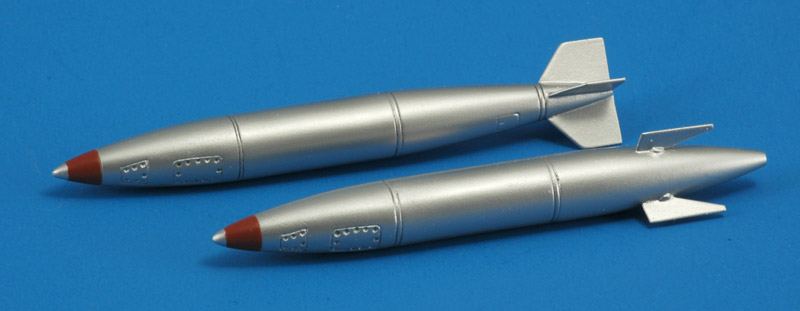
|